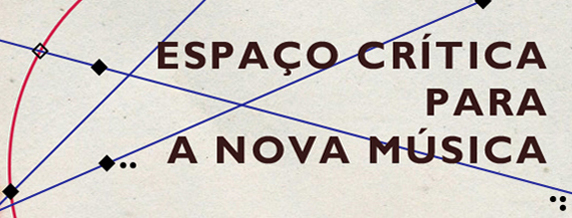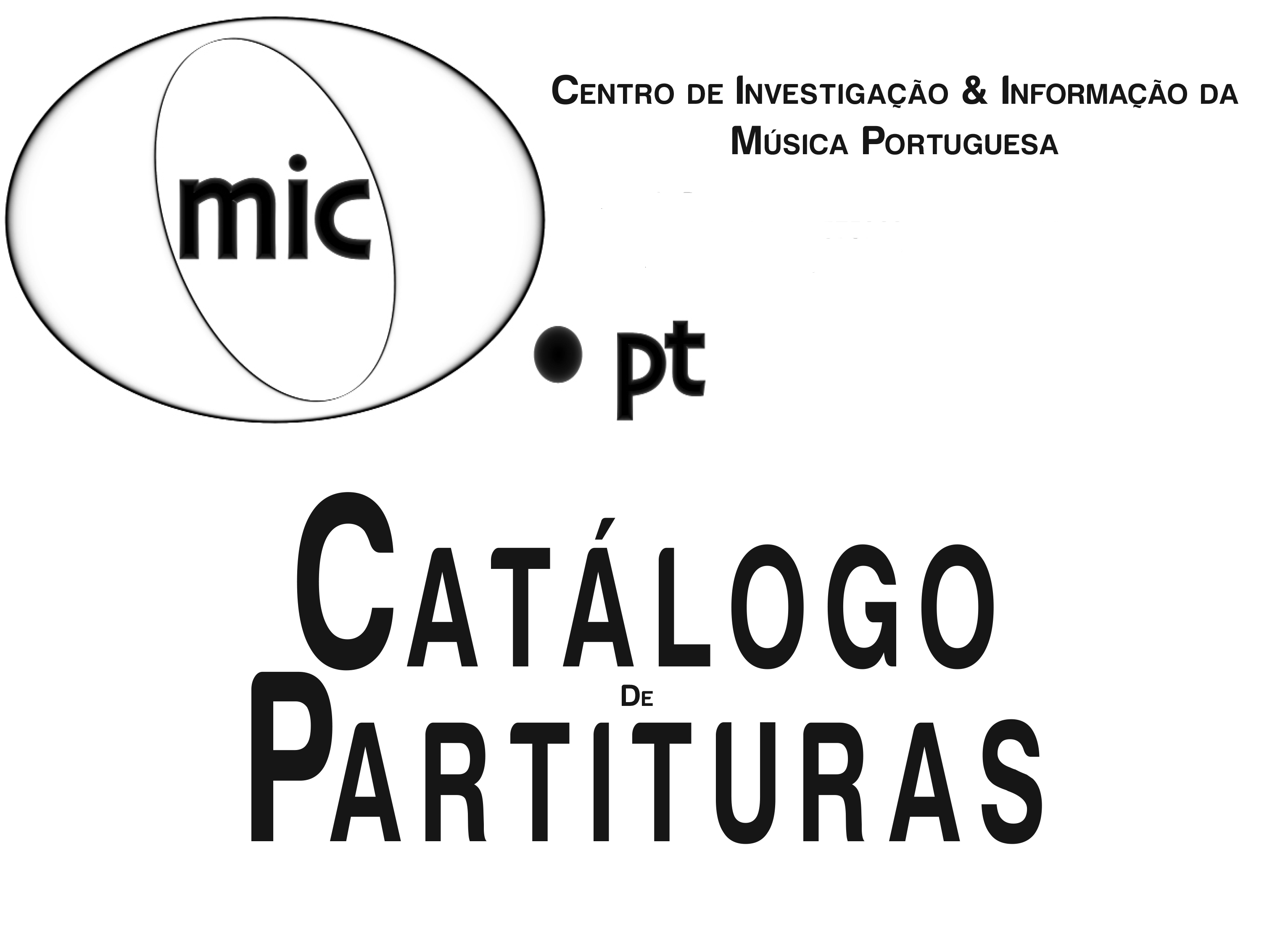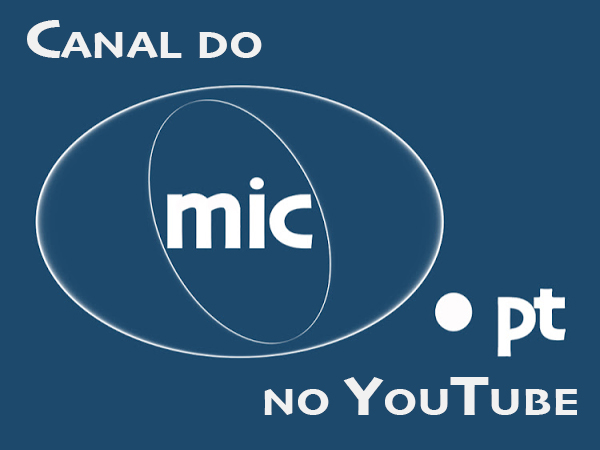Questionnaire/Interview
Part 1 . Roots & Education
How did music begin for you and where can you identify your music roots?
Amílcar Vasques Dias: It began with the solfeggio, harmonium, piano, as well as choral and Gregorian chant at the Braga Seminar. The Gregorian chant was a daily “ritual” during around ten months within a year, for ten years…!
Which paths led you to composition?
AVD: First of all, it was the curiosity to make research and improvise at the piano, and the examples of my first piano (Faria Borda, Domingos Bompastor) and harmony teachers (Manuel Faria). The latter had a special importance in my auditory/harmonic training, as he let me copy the voices (parts) from the scores containing many of his coral works. Copying the four voices of a masculine choir was the exercise that developed my capacity of harmonic perception.
Which moments from your music education do you find nowadays the most important?
AVD: The extensive practice and study of the Gregorian chant (and of the chant in general), and the piano. According to Jan van Vlijmen, composer and one of my composition teachers at the Royal Conservatory of The Hague, the Gregorian chant practice is reflected in my work particularly in the conception of the melodic structure (vocal or instrumental). The piano “moulds” the harmonic organization and the sound parameters, such as the attacks, timbres, registers or dynamics, among others.
Part 2 . Influences & Aesthetics
Which references from the past and the present can you identify in your music practice?
AVD: Bach, Debussy, Berio, Varèse, Stravinsky, Andriessen, Raaijmakers, Schat, Xenakis, Lima, Stockhausen...
From my teachers, I think I have learnt such qualities as being demanding, coherent and imaginative (from Cândido Lima); or freedom, imagination in the blending of styles and a persistent and unorthodox method from Louis Andriessen * (Berio’s student, “in love with” Stravinsky); the harmonic conception from Peter Schat **; the discreet disobedience and creative spontaneity from Dijk Raaijmakers; the “open disobedience” from Gilius van Bergrijk (electronics and improvisation).
With regards to my occasional “teachers” (during seminars, workshops, meetings, etc.) such as Karlheinz Stockhausen, I admired/was jealous of the rigour and method of working, and I have preserved the demand for detail. From Iannis Xenakis I keep memories of delicacy and seriousness in observing simple things, like the respect for age, form, firmness, colour and texture of a stone or a leaf of a plant/tree (qualities possibly inspiring sounds and/or structures…); and of serious things such as life and death, or the solitude of the composer in the moment of decision/option…
I also find inspiring some performers (among others from classical, jazz-fusion music and flamenco) – because of their technical and musical brilliance, free from prejudices and exceptionally creative – like Paco de Lucía and Amós Lora (young prodigy) in the flamenco guitar; the pianists Keith Jarrett, Misha Mengelberg (Dutch) and Tigran Hamasayan (young pianist born in Armenia) and Camarón de la Isla (flamenco singer); all of them are also references in my practice as composer and pianist.
* With Louis Andriessen I had the unique privilege to follow at the classes, between 1974 and 1976, the evolution of his composition, De Staat (1976), and impressive and awarded work (1977, UNESCO’s International Rostrum of Composers and the Matthijs Vermeulen Award) for large ensemble of brass, four oboes, four violas, three electric guitars (one bass guitar), two pianos, two harps, four female voices, based on Plato’s Republic. The premiere performance of De Staat in 1976 at the Carré Theatre in Amsterdam, lasting around 40 minutes, was an experience that marked me profoundly. I recommend the work’s recording on CD (1990) with the Asko/Schönberg Ensemble conducted by Reinbert de Leeuw.
** During his classes from 1974 to 78 he was sharing with the students the composition technique, which he developed, and where he emphasizes the function of the “triad” in the creation of 12 harmonic fields (hours); this “theory” was published in the book De Toonklok (1984). Harwood Academic Publishers then published it in 1993 as The Tone Clock, with translation and introduction by Jenny McLeod.
What, in your opinion, can the music discourse express and/or mean?
AVD: Music is the “result” of the organization when it comes to the intervals, scales, harmony, timbre, dynamics, and rhythm… in a determined tempo… However, within the surrounding vibrating field the ear “selects” the significant sounds, which it decodes while rejecting other ones, and so what music actually can express and/or mean is very subjective. It is also true that we can cause determined emotions using for example dissonant chords and determined registers of the instruments, thus creating a certain sound environment. The composer can have the “intention” of expressing something, but he actually never knows exactly what is the meaning that the listener comes up with… I also believe that the title of a work can guide the listener towards a determined meaning. For example, the pieces for piano Tear-tecer, Espadelar, Acácia de ninhos, Azinheira de silêncio, from the cycle, Lume de chão: tecido de memórias e afectos, suggest the listener’s focus in the perception of the respective music meanings.
In the context of western art music, do you feel close to any school or aesthetics from the past or the present?
AVD: I don’t feel close to any kind of school. Aesthetically, I appreciate Debussy, Varèse, Cage, Ligeti, Berio, Xenakis, Steve Reich, Louis Andriessen, and the fusion aesthetics in piano music, as in the case of Tigran Hamasyan who combines jazz and Armenian tradition, or David Dorantes with Debussy, flamenco and jazz.
Are there any influences of non-western cultures in your music?
AVD: In the projects dedicated to the Alentejo and flamenco chanting, I “naturally” use – in the preparation of the improvisations – non-western sonorities, with reference to Debussy and Hindu sitar music. Likewise, in the piece, Prelúdio à sesta das cigarras, one can find mixed harmonic gestures and sonorities (both European and from other parts of the world).
Part 3 . Language & Music Practice
Is there a music genre or style for which you have preference?
AVD: Not at all. I am interested in music that surprises me. I admire the originality-imagination-invention of a given work, as for example, Jonchaies by Xenakis, or Naturale and Sinfonia by Berio, or Vozes à luz – à memoria by Cândido Lima, or De Staat by Louis Andiressen.
With regards to your creative practice, do you develop your music from an embryo idea or after having structured the global form? In other words, do you proceed from micro to macro-form or is it the other way round? How does this process occur?
AVD: I always begin by giving the piece a name, which already has various elements such as words, syllables, onomatopoeias, and synaesthesia… For example, Unha-gata (2015) for two tubas and piano, is actually the name of a small plant or weed from the Alentejo fields, with an innocent pink flower and aggressive spikes, which immediately give me a general idea of how the music should “sound”. Obviously, the instruments – defined within the commission – have a very important role in this choice. Normally I elaborate paper sketches of cells, intervallic relations, numbers, harmonic aggregates, which I try out at the piano and then join, little by little, in order to construct small structuring unities that make “sense” to me or simply “please” me. The writing of the score on the computer is handled slowly, whilst cleansing, modifying, and changing – within a constant interchange between the piano and the computer. At this point my concern is that the visual appearance of the score expresses the spirit of the music, thus being inspiring for the performers.
In fact, I notice that some things appear – notes, aggregates, rhythms – of which I hadn’t thought before. They appear, because they needed to be there (!?) according to a certain, internal “logic” of the work. The same happened in Bagas de Zimbro – Prelúdio (2011), for the Permallets percussion group.
But it hasn’t always been like this. In the work Ser-Rana (1990), for ten accordions, string quartet and vibraphone, a commission by the F. S. T. K. (Foundation for Music Creation, Amsterdam), the introduction of the piece – 1’30’’ – came form an improvisation on a digital piano (MIDI), which I subsequently orchestrated for the referred instrumental group…
How in your music practice can you determine the relation between the reasoning and the “creative impulses” or “inspiration”?
AVD: I never define such relation. As I do my research and experiment with the materials, I tend to analyse and evaluate them almost simultaneously. In the subsequent phase of the writing one establishes a relation of “compromise” between the thought and the affect (“it was not what I thought, but I prefer it better!”).
What is your relation with the new technologies, and how do they influence your music?
AVD: There was a time – between 1974 and 1982 – when I created some “concrete music” and electroacoustic works at the studio of the Royal Conservatory in The Hague and at the Computer Music Center at the Columbia University [Viagem (1976), Raíz (1978), Diad’ira (1979/81), Demain dès l’aube (1982)]. The electroacoustic music pieces from the last 10 years are Ervas & Aromas (2006), Rua das abelhas (2007), O Pêndulo de Foucault (2007) and Eborenses (2014), music for a photo exhibition. The new technologies stimulate the creative imagination in the search for new sonorities in acoustic instruments.
On the one hand I compose at the piano and using the computer, but I also continue to use pencil and paper…
Please define the relation between music and science and how is the latter possibly manifested in your work.
AVD: Such a relation began in the renaissance and it got to the modernity still full of prejudices. To my mind, one could promote much more the dialogue and interaction between artists and scientists, for the benefit of the both. In my case, the observation of textures, colours and forms in nature, the “scientific” detail, awaken me for the comprehension of the world. For example, I have used with certain freedom the Fibonacci succession, which also represents biological configurations. The intervallic organizations of the harmony and metric values in my piece Cardos (1990), for clarinet and piano, are based on the observation of the different number of leaves along the stem of a thistle.
Does experimentalism play an important role in your music?
AVD: I take experimentalism as a mean to obtain something new and as an attitude resulting from creative circumstances/environments, or simply as a natural curiosity/impulse to experiment and/or manipulate materials (objects, textures, instruments), with an artistic objective. In this sense, I had the privilege to have contact with composers/teachers (Cândido Lima, in Portugal), and above all in the Netherlands (at the Royal Conservatory in The Hague), who taught this attitude in their classrooms.
And so: with Louis Andriessen for example, in the project that gave origin to his minimalist work Hoketus (1976); and this work led to the creation of the ensemble with the same name (1976-87) created by composition students/performers; with Dick Raaijmakers, composer, inventor of objects-installations, theoretician, considered one of the pioneers of tape and electronic music; with Gilius van Bergeijk, composer, improviser, jazz saxophonist, orienting my electroacoustic work that I mentioned above, Diad’ira (1979/81), created from the immense sound of a central heating boiler…
There are other experiences that encouraged me for experimentation; they happened by means of it, or provided me with the discovery of new measures for artistic production: at the Computer Music Center of the Columbia University, in 1988/89, with Brad Garton, composer and improviser; at the Simon Fraser University in Vancouver, Canada (1994), at the workshop Computed Art Intensive, which gave origin to my multimedia works, Dancing acorns (for oak galls, mime, piano, VNS hardware/software, with live image treatment) and Wine wall (for piano, two dancers, VNS and video).
I would also like to refer the unique experience at the workshops, rehearsals, analyses and concerts with Karlheinz Stockhausen and his ensemble (October 1981, during six weeks!) at the Royal Conservatory in The Hague, where the composer presented, commented and directed various of his works, among which I can recall Kontakte, Mixtur, Refrain, Hymnen, Trans, Inori, Zyklus, (…) various pieces for piano…, with the participation of students (several soloists), choir and the conservatory orchestra.
And I couldn’t fail to mention the particular human, musical and artistic experience with Ianis Xenakis and some of his “best” performers: Claude Helffer (piano), Élisabeth Chojnacka (harpsichord), Sylvio Gualda (percussion) in Aix-en-Provence, France (summer of 1985 at the Darius Millhaud Conservatory during 12 days!). There were also lessons, analyses, conferences, workshops with the U. P. I. C. and concerts with some of the composer’s works (that I recall at the moment): Psappha (percussion); Evryali e Herma (piano), Khoaï (solo harpsichord), Komboï (harpsichord and percussion)…
In what sense composition and performance are for you complementary activities?
AVD: Performance produces knowledge. Its action is in a certain way “transformative” when it comes to composition. Furthermore: composition doesn’t live without performance. From this “point of view” they are complementary. In the case of not notated composition (“improvisation”), performance is essential.
Part 4 . Present & Future
How could you define the composer’s role nowadays?
AVD: Either composer, writer, painter, designer or architect… either today or yesterday… I think that there is only one solution: to create intensively and persistently the best artistic objects possible, in the context of an enormous reconfiguration of political, social and economical values.
What are your present and future projects?
AVD:
Present projects...
Concerts:
1. Entre Cante e Piano: música de Alentejo (Between Chanting and Piano: music from Alentejo)
Amílcar Vasques-Dias, piano
Joaquim Soares, chanter
Pedro Calado, chanter
2. Em Cante (In Chanting)
Amílcar Vasques-Dias, piano
3. de ouvido e coração (between ear and heart)
Amílcar Vasques-Dias, piano
Luís Pacheco-Cunha, violin
Esther Merino, flamenco singer
Composition:
1. Unha-gata for two tubas and piano, commissioned by Sérgio Carolino
Future projects...
1. Chamilly, Mon Amour, scenic cantata for soloists, choir, string quartet and piano, with libretto by Rui Lage
2. Praia mar, for the Geração orchestra (Lisbon Municipality)
Could you highlight one of your more recent projects, present the context of its creation, as well as the particularities of the language and techniques used?
AVD: The project Entre cante e piano began in February 2013, having been premiered at the Small Auditorium of the Belém Arts Centre. The concert was recorded by Antena 2 and broadcast in various European countries.
Entre cante e piano is an original and unique concert in the framework of “contemporary chamber music”. It offers a serene performance – in an almost liturgical time – of the modes of the traditional Alentejo songbook, and of the original songs based on the chant’s traditional style, with the voices of Joaquim Soares and Pedro Calado, chanters of the Grupo Cantares de Évora, chanting to Amílcar Vasques Dias’ piano sound.
The relative simplicity of the melodic-harmonic structure of the modes – contrasting with the enormous richness and diversity of feelings behind the poetical texts, also impregnated with profound spirituality – demands from the performers a delicate competence with regards to invention-improvisation and in the ornamentation of word-melody; this is the essence of the art of Alentejo chanting in the search for emotion.
The piano doesn't have the function of accompanying instrument, being rather a third voice, a “cradle” of harmonies, timbres, gestures and ornaments, entwining the transformation of the two voices proceeding to expressivity.
Entre cante e piano is an intense music, encompassing and profound as the following verses:
Ó águia que vais tão alta
...
leva-me ao céu onde eu tenho
a mãe que me trouxe ao colo
...
que me está fazendo falta
(Oh eagle flying so high
...
take me to the sky where I have
the mother who took me to the lap
...
and who I miss)
November 2015, Amílcar Vasques Dias
© MIC.PT





